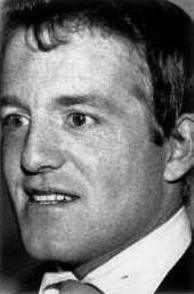
1936 - 1962
James Hanratty
Summary
Name:
Nickname:
The A6 Killer / A6 MurdererYears Active:
1961Birth:
October 04, 1936Status:
ExecutedClass:
MurdererVictims:
1Method:
ShootingDeath:
April 04, 1962Nationality:
United Kingdom
1936 - 1962
James Hanratty
Summary: Murderer
Name:
James HanrattyNickname:
The A6 Killer / A6 MurdererStatus:
ExecutedVictims:
1Method:
ShootingNationality:
United KingdomBirth:
October 04, 1936Death:
April 04, 1962Years Active:
1961Date Convicted:
February 17, 1962bio
James Hanratty was born on October 4, 1936, in Farnborough, Kent. He was the oldest of four sons in his family. His father was James Francis Hanratty, and his mother was Mary Ann Hanratty, whose maiden name was Wilson. By 1937, the family moved to Wembley, Middlesex.
Hanratty had a troubled early life. He was described by others as a retard, a psychopath, and a pathological liar. By the time he was 11 years old, he was declared ineducable at St James Catholic High School in Burnt Oak, Barnet. However, his parents did not accept that he was mentally deficient. They resisted attempts to have him placed in a special school. After leaving school in 1951 at the age of 15, Hanratty was still illiterate. He found work as a refuse sorter in the Public Cleansing Department of Wembley Borough Council.
In July 1952, Hanratty had a serious bicycle accident. He fell from his bike and was unconscious for 10 hours. After this accident, he was admitted to Wembley Hospital, where he stayed for nine days. Once he was discharged, Hanratty left home to seek work in Brighton. There, he found casual employment with a road haulier. However, just eight weeks later, he was found semi-conscious in the street, possibly due to hunger or exposure.
Initially, he was taken to the Royal Sussex Hospital but was soon transferred to St Francis Hospital in Haywards Heath. At this hospital, he underwent surgery based on a mistaken diagnosis of a brain hemorrhage. His medical report mentioned his unhappy home background. Hanratty claimed to be afraid of his mother and lacked feelings for his father. The hospital noted his mental challenges but did not provide a precise diagnosis. Some have suggested he may have suffered from epilepsy or post-concussional syndrome.
After leaving the hospital, Hanratty was sent to recuperate at his aunt's home in Bedford. He and his brother, Michael, had vacationed there as children. In Bedford, Hanratty found work driving a mechanical shovel for a company named Green Brothers, which made breeze blocks. He stayed at the job for three years. It was around 1954 that Hanratty began to frequent the area of Soho, where he spent time in various clubs and was exposed to the criminal underworld.
murder story
On the morning of August 23, 1961, the body of Michael Gregsten was found in a lay-by on the A6 road near Clophill, Bedfordshire. Alongside him was his girlfriend, Valerie Storie, who was semi-conscious. Michael had been shot twice in the head with a .38 revolver. Valerie had been raped and shot multiple times, leaving her paralyzed from the shoulders down.
Earlier that night, Valerie and Michael were in his car at a cornfield in Dorney Reach when a man approached them with a gun. He forced his way into the vehicle and ordered Michael to drive deeper into the field. The man kept them there for approximately two hours, talking to them and making demands. After a while, he demanded food and they drove to various stops, including a petrol station.
The man then changed his mind about where to go and ordered Michael to pull into a lay-by on the A6. When Michael hesitated, the man became aggressive. He tied Valerie's hands and then shot Michael twice, killing him instantly. Valerie, in shock and fear, pleaded for her life. The assailant then raped her and forced her to drag Michael’s body out of the car.
Afterward, he shot Valerie multiple times, believing he had killed her. She played dead as he fled the scene in the car. Valerie eventually lost consciousness after unsuccessfully trying to attract the attention of passing vehicles.
Investigators quickly started their work. Within days, the murder weapon was found on a London bus. The police uncovered a series of leads, including sightings of the assailant and the car, leading them to several potential suspects. One of these suspects was Peter Louis Alphon, a drifter. However, his alibi checked out, and he was cleared.
The attention then turned to James Hanratty, a petty criminal with a history of theft. Witnesses had described the assailant as having a Cockney accent, and Valerie later identified Hanratty in a line-up. Despite his claims of having an alibi, he was arrested in October 1961.
Hanratty's trial began in January 1962. His defense changed during the trial, as he shifted his alibi from Liverpool to Rhyl, Wales. However, the jury found him guilty after lengthy deliberation. Hanratty was sentenced to death and was executed on April 4, 1962, maintaining his innocence until the end.
In the years following his execution, the case remained controversial. In 2002, DNA evidence from the case was tested. Results indicated that Hanratty’s DNA matched that found at the crime scene, leading the court to conclude that he was guilty beyond a reasonable doubt.